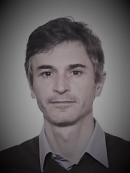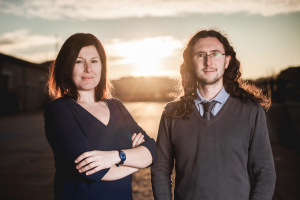Space as a superpower delivering sustainable business for the good of humanity

Since its inception, ESA Business Applications and Space Solutions (ESA BASS) has striven to put Space at the service of sustainability.
Elia Montanari, Downstream Business Applications, talks about how ESA welcomed the 17 Global Goals framework adopted by the UN in 2015 – and how this ultimately led him and the ESA BASS team on a revelatory journey of discovery…
The 17 Global Goals are also known as the Sustainable Development Goals or ‘SDGs’. They provide a complete framework that aims to transform our world by tackling multiple challenges humankind currently faces. They aim to ensure well-being, economic prosperity and environmental protection by 2030 through sustainable development world-wide.
“While the framework is thorough and it’s clear that any sustainability impact is the result of small steps, I have always found it difficult to quantify the relevant impact that our 1,700-strong network of companies deliver through the ESA BASS projects and studies,” says Elia.
First stop: Networking and Nobel laureates
In his quest to capture the ephemeral SDG impact on any of the prescribed indicators, Elia plugged into his network in the United Nations Economic Commission for Europe and the European Union Agency for Fundamental Rights. The search bore fruit when he came across some prominent work by economist and Nobel neo-laureate, Professor Esther Duflo, from Massachusetts Institute of Technology (MIT), notably her book entitled Poors Economics.
Professor Duflo promotes ‘impact over ideology’ meaning that policy makers must understand the impact of a policy decision through simple experimental evidence.
The basic data and some simple statistics rapidly revealed that ESA BASS activities currently account for about two thirds of all ESA activities – with at least one SDG nomination reported on the ESA SDG portal, despite ESA BASS representing less than 1% of the total ESA budget.
Sustainability is the Holy Grail
Further cross-data analysis identified 45 activities capable of delivering the holy grail of any business with purpose: business that is economically viable and sustainable in terms of one or more SDGs.
“It then became clear that Space can be a superpower to deliver sustainable business for the benefit of all,” said Elia.
This compelled him to venture further into the very source of the SDGs: “The epochal encounter happened in New York during the UN General Assembly in September 2019 but metaphorically very close to home,” he recounts. “A fellow Italian and from my home city of Ravenna – Leonardo (Chief Operating Officer of Studiomapp) and I met in New York. This was the first time a representative of ESA and one of its companies were present at UN General Assembly side meetings.”
 Founded by Angela Corbari and Leonardo Alberto Dal Zovo in 2015, Studiomapp was created with the mission of leveraging space data and assets to help address the SDGs of the UN 2030 Agenda.
Founded by Angela Corbari and Leonardo Alberto Dal Zovo in 2015, Studiomapp was created with the mission of leveraging space data and assets to help address the SDGs of the UN 2030 Agenda.
“Angela and Leonardo opened my eyes by showing how artificial intelligence and satellite imagery can be used to provide solutions for addressing impact in SDG9 (innovation), SDG11 (smart cities) and SDG14 (life in water).
Ultimately it’s a machine employed for the good of all of us, using satellite images to find information on territory and the environment on a global scale.”
It’s as a result of the work of Professor Duflo that Elia and his team are now engaging in further and deeper analysis about the impact of Space on the SDG indicators. In her MIT classes on the Foundations of Development Policy, Duflo teaches that the link of causality between a few basic but fundamental questions can be tested via thought experiments also known as randomised controlled trials.
It is also thanks to the achievements and excellence of companies like StudioMapp which are part of our ecosystem that Elia and his team will be able to quantitatively derive impact from these experiments.
The journey to deliver sustainable good through the power of Space has only just begun, so please get in touch if you want to hop on board!
Thales AVS France SAS
5-9 Rue de l'Industrie
93200 Saint Denis
France
Thales Deutschland GmbH
Thalesplatz 1
71254 Ditzingen
Germany
Thales Alenia Space Deutschland GmbH
Thalesplatz 1
71254 Ditzingen
Germany
Urban Sustainable Development LAB, a division of Dhyaan Design
105 The Mount
York
YO24 1GY
United Kingdom


